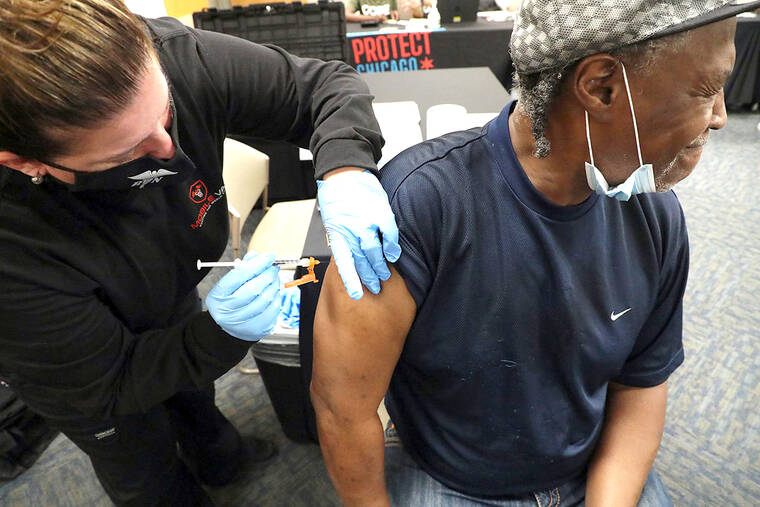Bunching COVID-19, the flu and RSV as a ‘tripledemic’ is misleading
The term “tripledemic” is being used to express the concerns about the collective spread of COVID-19, influenza and the respiratory syncytial virus, or RSV, during this fall and winter. Yet each of these infectious diseases has their own risk profile. Placing them under the same epidemic umbrella may inadvertently overstate the impending dangers — perhaps to the point of crying wolf when a calmer descriptor would be more beneficial and appropriate.
The seasonal flu has a long history. A typical season runs from October through early spring. Vaccines are available that provide some protection against this virus. The challenge is predicting about six months in advance which strains will be circulating during flu season. This is the lead time needed to produce the vaccines using an egg-based process, the most common method used today. Each year, the vaccine is typically between 40% and 60% effective across the entire population.
Seasonal flu typically affects the very young and those older than 65 most severely. These groups are targeted for vaccination, though everyone provides communal benefit from being vaccinated. The general rule is that when fewer people become infected, even those with little personal risk, there are fewer opportunities for the disease to spread those who are at the most risk of severe cases and poor outcomes.
COVID-19 has been around since at least March 2020. It has similar symptoms to those of seasonal flu, though its impact at the population level is much more severe. Those older than 65 are at the highest risk of poor outcomes. Vaccines are available that have been effective in reducing the risk of severe disease. An updated vaccine was just launched that targets an omicron subvariant.
RSV is a common respiratory virus, first identified in 1956. It typically causes mild symptoms, similar to those of the common cold. Much like influenza, for the young and those older than 65, the disease can be severe. Vaccines are available to protect against RSV, targeted at infants and those older than 60.
The majority of the population is not at high risk of severe illness from the seasonal flu and RSV. The same can be said about COVID-19, though its impact is more variable and generally more severe and deadly than the others. However, all these viruses can produce severe disease in those with other health conditions, such as those who are immunocompromised or have asthma.
Though all three viruses will circulate during the fall and winter, bunching them together as a “tripledemic” is misleading.
The two age-based groups that carry the highest risks of poor outcomes continue to be the very young and the elderly. Offering them the best available protections, such as vaccination, should be a top priority.
In general, RSV poses little risk to most people.
The seasonal flu is meticulously tracked by the Centers for Disease Control and Prevention and well understood. The strain mutations that occur through antigenic drift and shift make it an ongoing surveillance priority for the CDC. Such mutations are one reason why the vaccines must be updated and annual vaccination offers population benefits. The seasonal flu and its vaccines are highly unlikely to provide any surprises this year.
The same holds true for RSV. The only addition is the recently approved vaccines for the elderly and the very young. Including RSV in the “tripledemic” may provide more awareness of the new vaccines.
COVID-19 is the viral wild card in the group. New variants are constantly and rapidly emerging. What was dominant six months ago may no longer be circulating. The good news is that all the circulating variants are within the omicron lineage. This give some hope that the new government-approved COVID-19 vaccine will be effective across a spectrum of omicron variants, including new ones that may emerge.
COVID-19 stands out among the three viruses as posing the greatest risk across the widest swath of the population, as evidenced by the uptick in hospitalizations across the country over the past six months.
Yes, three viruses will be circulating this virus season. Yes, hospitalization may remain high due to the three viruses, as the CDC predicts. Yet labeling them as a “tripledemic” may be more like crying wolf than communicating what may be coming.
If public health authorities wish to engender trust in Americans and maintain credibility, presenting risks in a less sensational manner will go a long way. Catchy terms such as “tripledemic” may be counterproductive; they may undermine the perception of public health and its mission to protect and improve people’s health.
There is value in being prepared. There is no value in amplifying possible risks with a fear-inducing term.


